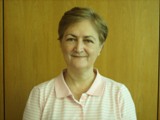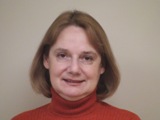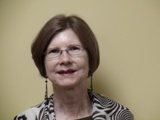|

|
Zeynep Altinsel
Michigan State University
East Lansing, Michigan, USA |
|
Elena Stetsenko
University of Minnesota
Minneapolis, Minnesota, USA |

|
|

|
Colleen Meyers
University of Minnesota
Minneapolis, Minnesota, USA
|
“The international migration of students and faculty is a major
trend in higher education.” (Morse, 2010) In our experience,
international academics (graduate teaching assistants, faculty, research
assistants, postdocs, and visiting scholars) have expressed a strong
interest in improving their language skills. However, because of time
constraints and status issues, regular sessions are often unavailable to
this diverse group of academics. To address this challenge, Michigan
State University and the University of Minnesota have developed and
delivered pronunciation workshops over the past several years to respond
to this need.
You might ask yourself, “Why would I take time out of my busy
schedule to plan and deliver such a workshop?” When we started doing our
workshops, our workload was already quite high because there was a high
demand for consultations. Many of our consultees had similar
pronunciation challenges, so it made sense to group them. Also, in our
many years of teaching pronunciation in our regular classes, we had lots
of materials and ideas to choose from. So, with some minor tweaking, we
had material that could be adapted for our workshops. Once we got the
workshops going and saw how enthusiastic participants were about them,
we knew that we were addressing an important need. It also gave our
programs better visibility on campus, with relatively little time and
effort on our part.
We would like to share our materials and what we have learned
from our experience in delivering such workshops so that you can
consider designing and implementing your own pronunciation workshops.
DESCRIPTION
We designed a series of four one-hour pronunciation workshops
for international faculty, covering the areas of word stress (Gilbert,
1993; Meyers, 2001; Teschner, 2004) and vowel clarity, fluency (thought
groups), emphasis, and tone (pitch variation). Each workshop includes
slides, handouts with rules, resources, and practice activities.
Michigan State uses undergraduate majors in speech science to assist
with group work. See the sample slides at the end of the article to give
you an idea of how our workshops are structured and what kinds of
activities we offer. We’ve also included a sample handout with
activities that we use in our Word Stress workshop.
In terms of format, all of our workshops follow these steps:
Step 1: Rationale
We start by showing either a video illustrating the feature or
an example illustrating the importance of the feature for clear
communication. For instance, the tone unit includes short video clips of
an ITA before he worked on his intonation and after he worked on his
intonation. This technique is valuable because it catches the
participants’ attention and provides concrete evidence for employing the
feature for successful communication.
Step 2: Introduce Components
Next, we introduce the components of the feature; for example,
for word stress, we talk about vowel length, pitch movement, and vowel
clarity. We often show Praat (free pronunciation software) so that
participants can get a clear sense of what they need to do with their
voice. We introduce one component at a time and have them immediately
practice it. So, for instance, when doing the word stress unit, we
introduce vowel length and then have participants practice with a
partner using rubber bands. Each time they practice, we circulate to
provide feedback and answer questions.
Step 3: Explain Rules
At this point, we move on to explaining the rules for the
feature, limiting the rules to those that will give them the most
mileage; for example, for word stress, we teach rules related to the
five most common English suffixes and parts of speech. Again,
participants are divided into pairs or small groups and practice
applying the rules to controlled exercises.
TIPS FOR SUCCESSFUL WORKSHOPS
Recruiting/Participant Limit
At the start of each semester, a mass e-mail goes out to
graduate students and postdocs, faculty and instructional staff, and
department chairs and heads. We also post information on our Center Web
site. We limit participation, although more people apply than actually
show up. We ask participants to register in advance online through our
Center’s Web site, but we allow drop-ins because not everyone who has
registered is able to make it. Our administrative assistant sends out
reminders a few days in advance, which boosts enrollment.
Day/Time of Day
From our five years of experience, at Minnesota we’ve learned
that it works best to schedule workshops on Mondays around lunchtime
approximately once a month. This routine helps participants to plan our
sessions into their schedules. We also order cookies and beverages to
make the atmosphere more welcoming. At Michigan State, we’ve found that
5:00 to 6:30 p.m. on Thursdays and Fridays is best. Fridays may not be
good for American students but are very convenient for international
students.
Location
We’ve experimented with holding the workshops at different
locations, but we’ve found that it works best to choose a central
location that is easily accessible to everyone.
Amount of Material
As with teaching in general, we’ve found that less is more. We
try to prioritize what is essential in terms of making a difference for
our participants and we limit our objectives to what can be easily
absorbed in a 60-minute period. Even though workshops are independent in
terms of content, we find that we have a group of regulars so we can
build upon skills/information previously learned.
Mix Up Groups/Pairs
For group and pair work, we ensure that participants work with
someone from a different native-language background/department so that
the interaction is more authentic.
CONCLUSION
We’ve provided these workshops for five years and the number of
participants is still large. We have offered the same topics throughout
the years, but also we integrate new topics from year to year. These
workshops not only have been highly successful for the participants, but
have resulted in increased visibility for our ITA programs on campus
and a skyrocketing number of consultations with international faculty.
Participants refer to the workshops as “classes” and really
enjoy them. We have a group of regulars who attend each and every
workshop. Participant feedback has been extremely positive: Some
participants have said that “everything” has been the “most useful” and
when asked “What could be improved?” the most common answer is “more
time!”
Presentation Power Point
Presentation Handout
Presentation Activity Sheet
REFERENCES
Gilbert, Judy. Clear Speech: Second Edition. (1993). Cambridge University Press: NY. 67-68.
Meyers, Colleen and Sheryl Holt. Pronunciation for Success:
Second Edition. (2001). Aspen Productions: Burnsville, MN,
85-86
Morse, R. (2010, Feb. 25). World’s best universities:
International students and international faculty factors methodology. US News & World Report. Retrieved from http://www.usnews.com/mobile/articles_mobile/worlds-best-universities-international-students-and-international-faculty-factors-methodology
Teschner, R. V., & Whitley, M. S. (2004). Pronouncing English: A stress-based approach with
CD-ROM. Washington, DC: Georgetown University Press.
Zeynep Altinsel is an instructor in the TA program
at Michigan State University, specializing in working with nonnative
English speakers. She coordinates the ITA-Undergraduate ITA-Undergraduate Buddy
Program and the TEAM
Pronunciation Tutorials. In the Office for
Faculty and Organizational Development, she works as a pronunciation
consultant.
Elena Stetsenko is an instructor at the Center for
Teaching & Learning at the University of Minnesota where she
teaches, consults, and facilitates workshops on language, teaching, and
culture. She’s interested in how language and culture interact.
Colleen Meyers is an instructor at the Center for
Teaching & Learning at the University of Minnesota where she
teaches, consults, and facilitates workshops on language, teaching, and
culture. Her interests include the intersection of nonverbal
communication, pragmatics, and pronunciation. | 
